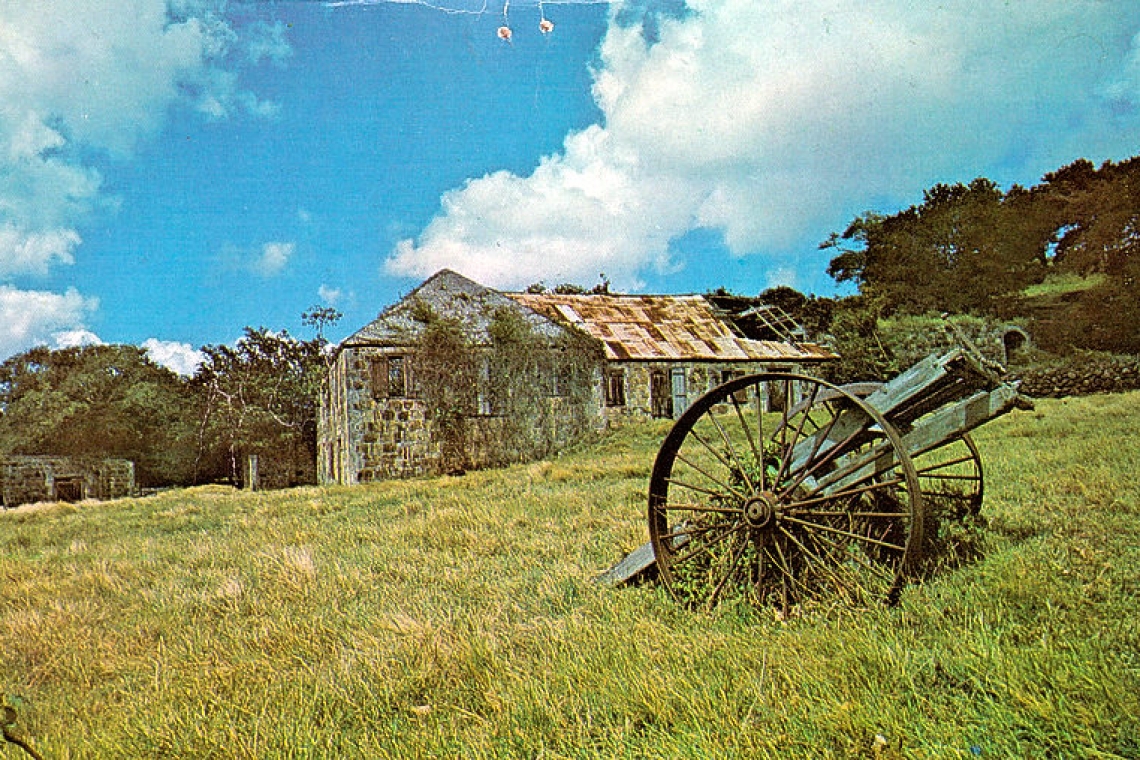Caption : Some structures from the sugar era still stand. (Barbara Cannegieter postcard collection)
By Mark Yokoyama
Anyone who has spent even a little time on St. Martin is used to watching it change. Winter’s lush green hills are bare and bone dry in the spring. Beaches grow and shrink with shifting sands. Heavy machines cut into the hillsides to clear land for roads and buildings. Ponds are filled, great trees grow and die. Ruins collapse under the weight of centuries, or just the years since Hurricane Luis.
St. Martin may be almost unrecognizable to someone born here 80 years ago. But even a long human life is just a moment in the vast age of an island. St. Martin has been through even bigger changes, witnessed by people who are long since gone, and in the ages before anyone was here to see them at all. Here are a few of them.
Look in the direction of St. Barts and imagine not sea, but land, between here and there. Then imagine unbroken land continuing just as far on the other side of St. Barts.
Imagine land extending for miles in almost every direction from the St. Martin of today, forming an island the size of Trinidad. It may sound impossible, but 12,000 years ago when the sea level was more than 100 metres lower, this is how St. Martin was.
Imagine your surroundings with every sign of human presence gone. Thick scrub full of thorny plants fills most coastal areas and lowlands. Explosions of bright blue flowers dot the landscape where Lignum Vitae trees are in bloom.
In each ravine, massive trees have grown tall to capture sunlight in the canopy leaving a cool and open forest floor. Flocks of parrots fly over, chattering to each other, and huge colonies of egrets nest on the mangrove trees that surround every pond. This is the paradise that the first Amerindian people discovered here about 5,000 years ago.
Imagine a St. Martin 200 years ago, covered almost completely with fields of giant grass, with thick stalks twice the height of a person. The fields reach high into the hills, covering many places that have regrown trees in the centuries since.
A few dozen plantation houses are spread around the island, built in wood on stone foundations. Somewhere near each one, there is a raised ring where cows or donkeys circle, turning the giant rollers that crush the sugarcane.
Near each mill, there is a cluster of small wattle and daub homes. Most of the people on the island live in them, surviving day by day under an unimaginably terrible system of slavery that they would soon take a part in overthrowing.
What St. Martin era are you curious about? Tell us by writing in to The Daily Herald or This email address is being protected from spambots. You need JavaScript enabled to view it..







